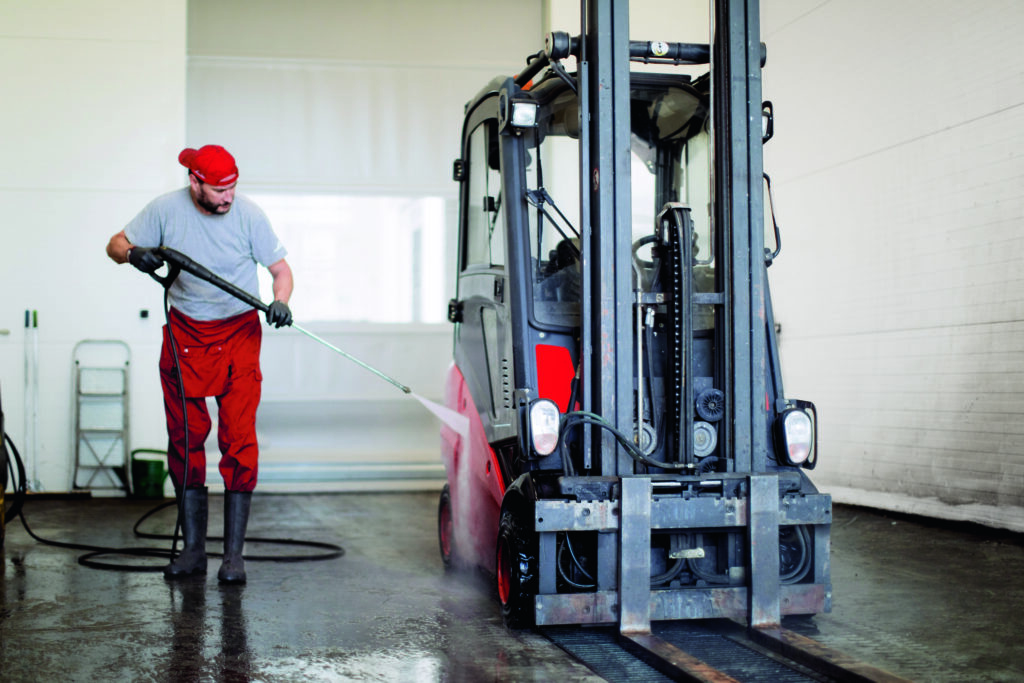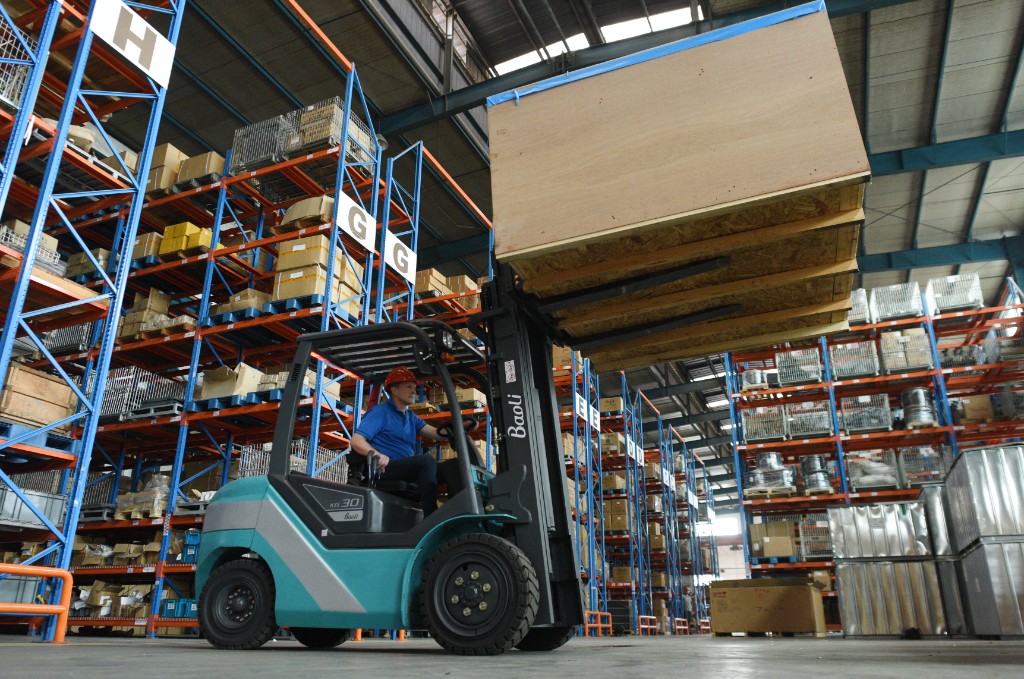Updated: 4/20/2023
When considering ways to extend the life of your forklift, one often gravitates to the more obvious ideas. Depending on how your truck is powered, you may be thinking regular oil changes, keeping a close eye on the motor/engine, following the manufacturer’s maintenance schedule or regular up-keep of the tires. However, one important step to maintaining a forklift that often gets overlooked is cleaning and disinfecting the truck. Below we will highlight some important steps that will ensure your forklift is functioning at peak performance and will remain running for a long time.
Clean off exterior debris
Just as you would clean your personal car when it becomes visibly dirty, the same applies for the forklift. Depending on your truck’s source of power will determine what tools you can clean with. For an electric truck, knocking off accumulated grim with a broom will help dislodge unwanted particles, making it easier to clean. An air compressor can also assist with the removal along with non-toxic bio-degradable solutions. Keep in mind that water can affect your trucks electrical components, so use caution to prevent electrical damage.
As noted in the Linde service guide operators manual, “hot steam or cleaning materials with a powerful degreasing effect should only be used with great caution as this will affect the grease filling of bearings with lifetime lubrication, causing it to escape. As re-lubrication is not possible, the bearings will be irreparably damaged.“
When cleaning a non-electric truck, it is advised to use a pressure-washer to knock-off hard to remove substances. In addition, the use of the pressure-washer will prevent the operator from getting too close to the truck, during cleaning, protecting one from potential hazardous run-off or splash-back.
The Linde operator’s manual states, “when cleaning with a water jet (high-pressure or steam cleaner etc.), it should not be applied directly to the area of the front axle, electric and electronic components, connector plugs or insulating material. Water should not be used for cleaning in the area of the central electrical system and switch console.“
Don’t forget the underside of the truck
It is often noted that we clean what we see, however, hidden parts of the truck are as important, if not more to maintain. Depending on where you work, your truck may be used in many different environments. Dirt and grim can easily build up in those hard to reach areas, causing potential issues to the undercarriage of the truck. Keeping those areas cleaned, will prevent major issues down the road.
Work from the top of the truck down
For heavier soiled areas, pre-soaking your truck may be necessary. That will allow build-up to soften, making it easier to clean. When cleaning your truck, make sure to start at the top and work your way down. That way, grim and dirt will flow down, and you are not having to re-clean areas.
Allow proper dry time
Once your truck is sufficiently cleaned, park it in an area that will allow appropriate dry time – preferable in the sun. Allowing your truck to dry will ensure that its components are working efficiently and will prevent damage to the truck.
Protect yourself
No matter how you plan to clean your truck, make sure you are using protective gear. When using cleaning materials or tools, there is always a chance that substances can splash back on you. Be sure to wear protective eye-wear, boots and gloves, as well as long sleeves and pants to protect your skin.




